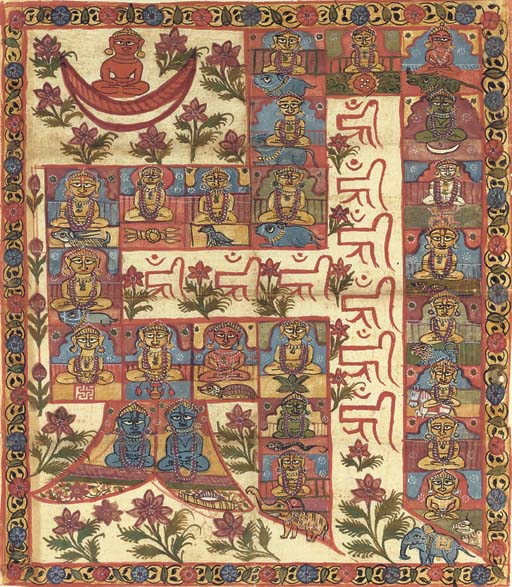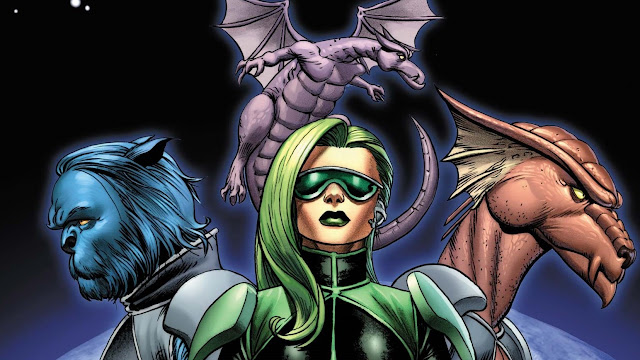Σ‧𐤔࿀☉‧Δ
Ainsi font, font, font,
Les petites marionnettes,
Ainsi font, font, font,
Trois p'tits tours et puis s'en vont.
SHIELD & SWORD
For decades, SHIELD has been the premier peacekeeping agency on Earth, monitoring threats across the planet and dealing with the likes of Hydra, AIM and other organizations who threaten world peace. But what about threats from beyond Earth? What happens when one of the many alien empires in the Marvel Universe decides to come calling? That's where SWORD comes in.
SWORD traditionally stands for Sentient Worlds Observation and Response Department. Operating from an orbital space station called The Peak, SWORD's agents monitor the cosmos and do their best to neutralize any extraterrestrial problems before they make landfall. With any luck, humanity will never know how close they've come to being wiped off the face of the universe.
While SWORD has appeared in a great many Marvel stories over the past two decades, the agency actually has its roots in the X-Men franchise. The agency first appeared in 2004's Astonishing X-Men #5, by writer Joss Whedon and artist John Cassaday.
SWORD initially plays a fairly antagonistic role in that series. Under the leadership of the perpetually cranky and antisocial Abigail ( אֲבִיגַיִל (avigáyil, “Abigail”, literally “her Father's joy” or “fountain of joy”) Brand, SWORD forms a tenuous alliance with an alien named Ord (order or ordinance). His people, a warrior race from a planet called The Breakworld, fear their prophesied destruction at the hands of a mutant. Rather than allow him to wipe out all life on Earth, Brand convinces Ord to settle for orchestrating the creation of a cure for the mutant gene. When that fails, the Breakworld fires an enormous metal projectile at Earth, one which would have obliterated the planet if not for Kitty Pryde's handy phasing powers.
Since then, SWORD has settled into a regular role as the even more secretive sister agency to SHIELD. Marvel even briefly published a dedicated SWORD comic in 2009, though the series was cancelled after five issues. SWORD was temporarily phased out after the events of 2015's Secret Wars, with the agency effectively replaced by a new incarnation of Canadian super-team Alpha Flight.
But in the wake of 2020's X of Swords crossover, SWORD has returned in a new form. Now the agency is more closely tied to the X-Men than ever, to the point that the majority of its commanding officers are mutants and Magneto is the official liaison with the mutant nation of Krakoa.
SHIELD (Strategic Homeland Intervention, Enforcement and Logistics Division) - SHIELD is typically the dominant peacekeeping agency on Earth, one that often works alongside heroes like the Avengers to combat all manner of supervillains and terrorist organizations. While the modern incarnation of SHIELD was formed after World War II, few realize the organization's roots date back thousands of years. Even in the days of ancient Egypt, humanity had a shield to guard against threats like Galactus and the Brood.
SWORD (Sentient Worlds Observation and Response Department) - A direct offshoot of SHIELD, SWORD is tasked with monitoring extraterrestrial threats while its sister agency focuses on enemies from within.
HAMMER (full name unknown) - After SHIELD failed to prevent a Skrull invasion of Earth, the agency was scrapped and replaced by the Norman Osborn-led HAMMER. True to form, Osborn uses his new agency mainly as a means of furthering his own agenda and putting the world's worst villains in positions of power. After Osborn's crimes are exposed, HAMMER itself is shuttered and a new version of SHIELD is created in its place.
SPEAR (full name unknown) and STRIKE (Special Tactical Response for International Key Emergencies) - Marvel has never been entirely consistent about whether SHIELD is sponsored by the US government alone or the full United Nations Security Council. As such, other world nations sometimes form their own SHIELD equivalents. STRIKE is a British agency, while China forms SPEAR after the events of 2013's Infinity.
西有盾 — 東有戈。αἰγῐ́ς ϗ λόγχη°
"This battle will be our moment in time.
When the world sets itself right.
This is order restored. As it always has been, as it always should be.
The shield in the west -- The spear in the East.
Together we must answer this challenge, and prove ourselves worthy."
-- Xian Zheng (鄭賢/神仙 Shénxiān)
S.P.E.A.R. was a Chinese intelligence-gathering organization created for homeland security. It possessed over 150,000 operatives, analysts, and overseers, sixteen airships, and a science division. Commanded by director Xian Zheng, the organization was built after the invasion by Thanos, in which the super-powered team Dynasty was decimated, Feeling that they needed to be able to protect themselves, China wanted to be on the same level as S.H.I.E.L.D.. So they appointed Zheng to head up the new project.
Falcon first encountered them during Gorgon's attempt to launch an attack on China using a giant dragon. When the Hand attacked their flying headquarters, the Circle, they deployed their own dedicated superhuman response team, the Ascendants.
A supposedly rogue group in S.P.E.A.R. agents and scientists committed around 300 telepaths in a secure location somewhere in China to the task of making a psychic recreation of the destroyed 九龍寨城 Kowloon Walled City. This simulacrum would act as an incubator for the Fury and its offspring as part of an elaborate plot by M.O.D.O.K. to infiltrate S.H.I.E.L.D.
The Circle is the main headquarters for the Chinese intelligence agency known as S.P.E.A.R.. Under the command of Director Xian Zheng, the Circle was built along with the organization after the invasion by Thanos. Feeling that they needed to be able to protect themselves, China wanted to be on the same level as S.H.I.E.L.D.. So they appointed Zheng to head up the project.
The Circle's main hub possessed over 150,000 operatives, analysts, and overseers, sixteen airships, and a science division, with the most sophisticated surveillance built by man. While entertaining Avenger member The Falcon, The Circle came under attack by the Gorgon and members of the Hand. To deal with the situation, Zheng revealed that the Circle was also home to their own special task force, The Ascendants.
ARMOR (Altered-Reality Monitoring and Operational Response Agency) - If SWORD is responsible for safeguarding against threats from other worlds, ARMOR's job is to safeguard against other dimensions and realities. This obscure agency helps prevent the apocalyptic plague from the Marvel Zombies universe from gaining a foothold in the regular Marvel Universe.
Abigail Brand - Brand is the commander of SWORD, essentially the agency's equivalent of Nick Fury. Though almost nothing is known about her past, Brand is a half-alien who carries the mutant gene (hence her distinctive green hair). She's also perpetually cranky and antisocial, which makes her good at her job but wins her few allies in SHIELD or among the superhero community.
Sydren - It wouldn't do to staff an intergalactic peacekeeping agency with only Earthlings. Sydren is an alien from the planet Drenx. As Brand's right-hand-man, he's basically indispensable, though his Cobra Commander-esque lisp tends to drive her up a wall.
Beast - Most of the X-Men would just as soon have Brand stay aboard the Peak and away from Earth, but not Beast. A scientist first and a superhero second, Beast is fascinated by SWORD's operations and often works alongside Brand's team. He and Brand have even formed a romantic relationship, to the surprise of everyone else around them.
Lockheed - The X-Men were thrown for a loop when they discovered Kitty Pryde's pet dragon Lockheed is actually a spy for SWORD. It turns out Lockheed is also a polyglot whose mastery of numerous alien languages makes him a valuable asset.
Henry Peter Gyrich - This back-stabbing government agent has made enemies of basically every hero on Earth, so it was inevitable he'd find a new gig at SWORD. Gyrich is installed as co-commander in order to help the government keep closer tabs on Brand. Predictably, the two don't get along one bit.
Spider-Woman - Jessica Drew is as much a secret agent as she is a superhero. And after a Skrull impostor ruins her reputation on a global scale, Spider-Woman finds solace in leaving Earth behind and taking up a new mission with SWORD.
SWORD in Other Media
Having debuted back in 2004, enough time has passed that SWORD has begun trickling out into other Marvel media. Most significantly, both Agent Brand and SWORD feature in multiple episodes of the animated series Avengers: Earth's Mightiest Heroes. Abigail Brand also appears in Iron Man: Armored Avengers, though in that case she's depicted as an agent of SHIELD. Two particularly SWORD-heavy comics - Astonishing X-Men and Spider-Woman, Agent of Sword - have also been adapted into animated motion comic format. Agent Brand in Avengers: Earth's Mightiest Heroes.
Agent Brand in Avengers: Earth's Mightiest Heroes.
SWORD appears to finally be making its live-action debut thanks to the post-credits scene in Spider-Man: Far From Home and the debut of WandaVision, but it nearly appeared much earlier in the MCU timeline. A deleted scene from 2011's Thor features Erik Selvig referencing a "SWORD database," and Agents of SHIELD executive producers Jed Whedon and Jeffrey Bell confirmed they tried unsuccessfully to include SWORD in earlier seasons of the show. In both cases, it's unclear whether Marvel would even have been allowed to reference SWORD in the MCU while the X-Men movie rights were still at Fox. Fortunately, that's no longer an issue.
How SWORD (and Its Logo) Fits Into WandaVision and the MCU
A number of Easter eggs in the first two episodes of WandaVision all but confirm SWORD has finally arrived on the scene, including what looks to be the agency's logo. One of the many mysteries surrounding the series, however, is why the events of WandaVision would fall under SWORD's mandate. Dangerous though her powers are, why is Wanda Maximoff on the radar of an agency whose mission is to monitor other worlds?
The answer may lie in the SWORD name. Based on a series of digital trading cards from Topps, it appears the SWORD acronym in the MCU is different than that of the comics - Sentient Weapon Observation Response Division. Rather than focus on extraterrestrial threats specifically, it would seem this version of SWORD is intended to be a safeguard against any living being whose powers threaten the world. Whatever the true cause of Wanda's sitcom-flavoured hallucinations, Monica Rambeau and her fellow SWORD agents may be working to prevent her powers from spilling out into the wider world.




























